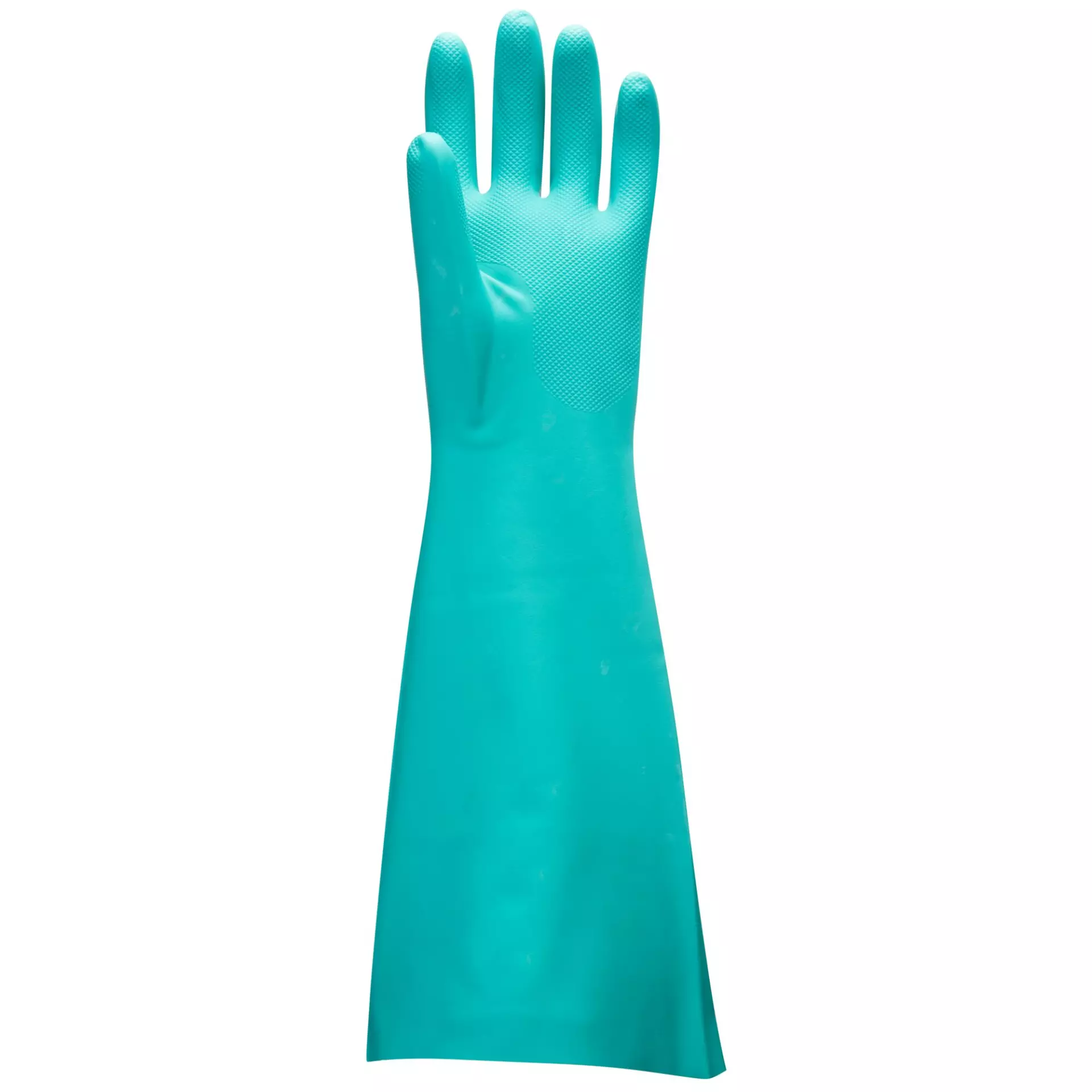


Features You'll Love

Cuff Style · Open
Determines how the glove secures around the wrist, affecting fit, protection from debris, and ease of putting gloves on and taking them off.

Grip Finish · Textured
The surface texture or coating on the palm and fingers that determines how securely the gloves can grip tools, materials, and surfaces during work tasks.

EN 388 · Abrasion Resistance Level 4, Puncture Resistance Level 2
Offers the highest level of protection against intense rubbing and wear from rough materials.
Withstands moderate force from sharp objects like heavy-duty splinters or wires.
Portwest
Extended Length Nitrile Gauntlet, Green, 12 pairs
Extended Length Nitrile Gauntlet, Green, 12 pairs
5 / 5
106,46 €
Price per 12 pairs
8,87 € / pair
Choose size
Free delivery
Features You'll Love

Cuff Style · Open
Determines how the glove secures around the wrist, affecting fit, protection from debris, and ease of putting gloves on and taking them off.

Grip Finish · Textured
The surface texture or coating on the palm and fingers that determines how securely the gloves can grip tools, materials, and surfaces during work tasks.

EN 388 · Abrasion Resistance Level 4, Puncture Resistance Level 2
Offers the highest level of protection against intense rubbing and wear from rough materials.
Withstands moderate force from sharp objects like heavy-duty splinters or wires.
Product description
This extra-long chemical gauntlet provides comprehensive protection against solvents and chemicals with its 48cm length and 0.55mm nitrile construction. The silicone-free design makes it ideal for applications where silicone contamination is problematic, while the textured anti-slip pattern ensures reliable grip in both wet and dry conditions. Certified for food contact and meeting multiple EN standards, this gauntlet offers versatile protection across industrial, chemical, and food handling applications.
Product Features:
- Extra-long 48cm design for extended arm protection
- Anti-slip textured pattern for enhanced grip in wet and dry conditions
- Silicone-free construction prevents contamination issues
- Chemical resistant properties for solvent protection
- Approved for safe food handling
Technical Details:
- Length: 480mm
- Thickness: 0.55mm
- Dexterity rating: Level 5
- Good abrasion resistance
Recommended Applications:
- Industrial maintenance, offshore drilling, printing and chemical industries
- Chemical, oil and food industries
- Manufacturing, paint applications, electronics and glass handling
- Food handling operations
Standards:
- EN ISO 21420:2020 Dexterity 5
- EN 388:2016 + A1:2018 (41X2X)
- EN ISO 374-1:2016 + A1:2018 Type A (AGJKLMNOPST)
- EN ISO 374-5:2016 Micro Organisms
- CE certified and UKCA marked